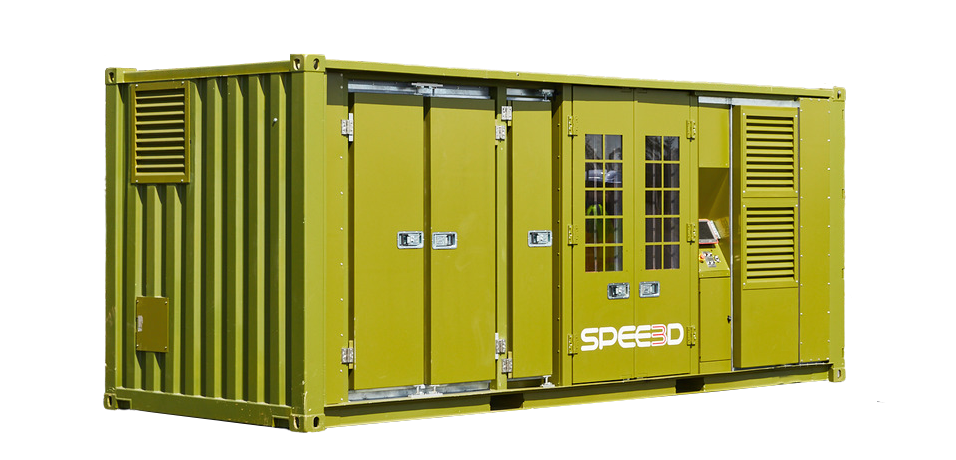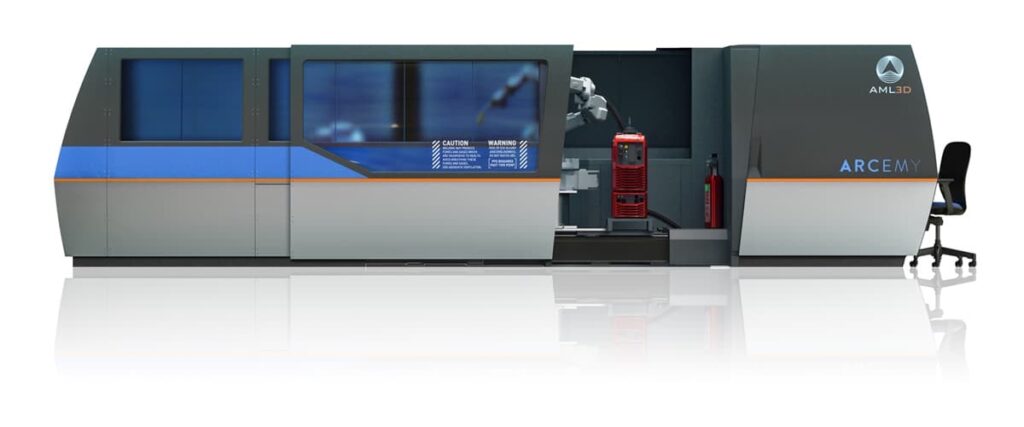Three announcements that have become typical for Australia’s small but increasingly significant 3D printing market all happened within a few days of each other. First, Titomic, a manufacturer of cold spray additive manufacturing (CSAM) platforms based in Melbourne, announced that the company had entered the European defense market through its sale of a D523 system to the Fleet Support Service of France’s navy, the Navy Nationale.
Next, AML3D, of Adelaide, released preliminary earnings for the year ending June 30, 2023, and the key takeaway is that so far in 2023, the company has A$6 million (about US$3.84 million) worth of sales on the books. It is worth noting that this has followed the company’s pivot from a contract manufacturer to an OEM, and most of AML3D’s 2023 sales so far come from the US military. This means those sales have significant scale-up potential if initial adoption by the US Navy is successful. As the company’s interim CEO, Sean Ebert, put it, “We are confident of converting our ARCEMY sales pipeline into firm contracts that will expand on the $6 million in confirmed orders to be delivered during FY24.”

Finally, SPEE3D, based in the suburbs of Melbourne, announced it had partnered with the Consortium for Additive Manufacturing Research and Education (CAMRE) to bring SPEE3D’s CSAM platform to the US Tri-Service Maritime Forces (the Navy, Marine Corps, and Coast Guard). As part of the deal, an XSPEE3D system will be installed at the Naval Postgraduate School. A comment from the program manager for CAMRE, Chris Curran, does a good job of encapsulating why Australia may be a perfect home for AM: “The Naval Postgraduate School chose the XSPEE3D metal 3D printer because of its expeditionary nature that allows it to be contained inside a rugged and deployable metal container and deployed anywhere, including harsh field conditions.”
Australia is a highly developed industrialized nation, but it is also one of the most sparsely populated nations, and possibly the most isolated region in the world. Thus, it does not seem like an accident that one of the main features its AM companies are focused on is deployability.
The same strengths that are attracting the US and French militaries to Australia’s 3D printing OEMs could play an even larger role long-term, in Australia’s domestic economy. This is especially true, as I mentioned recently in a post about AML3D, given the significance of the mining and oil & gas sectors to the Australian economy. The attributes that make a technology optimal for a navy, for instance, also make that technology optimal for an offshore natural gas platform.

In recent years, Australia’s federal government has joined all the other highly industrialized nations in funding advanced manufacturing R&D efforts. According to the Australian government’s Trade and Investment Commission (Austrade), “advanced manufacturing accounts for around half of Australia’s A$100 billion [about US$64 billion] annual manufacturing output and is one of the fastest growing output sectors.” Austrade also notes, “Advanced manufacturing has become a prime avenue for inward investment.”
It is not clear what definition of advanced manufacturing Austrade was using, but a 2017 St. Louis Federal Reserve article defined it as “industries in which research and development spending exceeds $450 per worker and at least 21 percent of jobs require a high degree of technical knowledge.” The article found that advanced manufacturing, defined that way, represented a similar amount of the US manufacturing sector’s output (about 53 percent).

However, the US manufacturing sector, in addition to being, of course, much larger in aggregate terms, is also proportionally much larger than Australia’s: Australia’s population is a little under 8 percent the size of the US population, but its manufacturing sector is 2.5 percent the size of the US’s $2.5 trillion manufacturing sector. This means that Australia’s manufacturing output needs to triple in order for the nation to catch up with the US.
It appears to be of the highest strategic priority for the US government, that Australia catch up to the US in its manufacturing output. In September, 2021, the Australian government created a major international snafu by canceling a $66 billion deal made with France to purchase 12 diesel-electric submarines. Instead, the nation formed the AUKUS alliance with the UK and US, entailing cooperation on a variety of different emerging technological fronts. The centerpiece of that deal is nuclear-powered submarines, with AUKUS officially agreeing to a contract in March, 2023 that is “the biggest single defense project” in Australia’s history, set to run the country $245 billion by 2055.
In that context, it is clear, for one thing, that Australia’s manufacturing sector will have to grow. And, also because the nation’s overall manufacturing sector is relatively small, it seems highly possible that advanced manufacturing could soon take up a much larger percentage of Australia’s total manufacturing sector than it currently is. This is simply because the amount of automation that will be needed in order to maximize productivity will call for the most sophisticated available manufacturing methods. Insofar as Titomic, AML3D, and SPEE3D are all advanced manufacturing operations focused on maritime applications, they appear to be among the very first real-world signs of the AUKUS rubber meeting the road.
Featured image, a rendering of the future SSN-AUKUS submarines, courtesy of BAE Systems
Subscribe to Our Email Newsletter
Stay up-to-date on all the latest news from the 3D printing industry and receive information and offers from third party vendors.
You May Also Like
GE Additive Transforms into Colibrium Additive in New Brand Move
One of the largest and most compelling companies in the 3D printing industry, GE Additive, has undergone a rebrand. Now, known as Colibrium Additive, the company and its new name...
Attending the ASTM F42/ISO TC 261 Meetings: The Nitty-Gritty of Additive Manufacturing
I never thought I’d be so excited about an event focused on additive manufacturing (AM) standards, but here we are! When I learned that the recent biannual ASTM F42/ISO TC...
Gorilla Sports GE’s First 3D Printed Titanium Cast
How do you help a gorilla with a broken arm? Sounds like the start of a bad joke a zookeeper might tell, but it’s an actual dilemma recently faced by...
3D Printing Webinar and Event Roundup: April 21, 2024
It’s another busy week of webinars and events, starting with Hannover Messe in Germany and continuing with Metalcasting Congress, Chinaplas, TechBlick’s Innovation Festival, and more. Stratasys continues its advanced training...
































